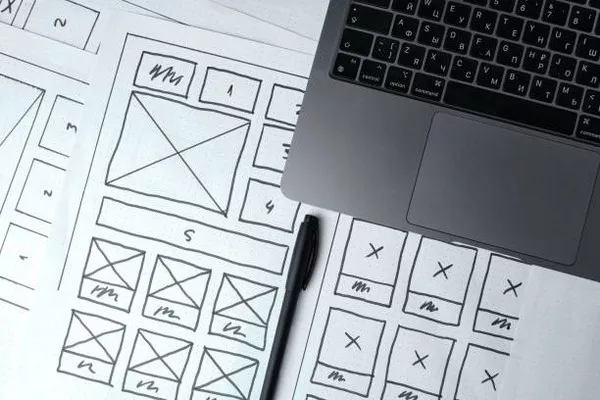In today’s fast-paced digital landscape, maintaining a website’s effectiveness is crucial for any business. A website is not a static entity; it requires ongoing attention to remain relevant, functional, and engaging. The question many businesses face is: How often should a web designer revisit the design of a website? This article explores the key factors that determine the need for design updates and provides guidance on how frequently web designers should assess and refresh their designs.
Understanding the Need for Regular Design Revisions
Web design is not a one-time project but an ongoing process. Several factors influence the frequency with which a website’s design should be revisited:
Technological Advances: The rapid evolution of technology can render certain design elements obsolete. New web technologies, tools, and standards emerge regularly, and integrating these advancements can enhance a website’s performance and user experience.
Changing User Expectations: User preferences and behaviors shift over time. What users found appealing or intuitive a few years ago might not be relevant today. Websites must evolve to meet these changing expectations and provide a seamless user experience.
Competitive Pressure: The competitive landscape continually evolves. To stay ahead, businesses must ensure their website is not only functional but also stands out from competitors. A fresh, innovative design can give a business a competitive edge.
Brand Evolution: As a company grows and evolves, its branding may change. A website should reflect the latest brand identity, including updated logos, color schemes, and messaging.
Performance Metrics: Analytics and user feedback can highlight areas for improvement. If data shows that certain design elements are not performing well or causing user frustration, it may be time for a redesign.
Recommended Frequency for Design Reviews
While there is no one-size-fits-all answer, several guidelines can help determine how often a web designer should revisit a website’s design:
Annual Review: A good rule of thumb is to conduct a comprehensive review of the website’s design at least once a year. This review should include an assessment of the site’s aesthetics, functionality, and alignment with the latest design trends and technologies.
Quarterly Updates: For websites in fast-moving industries or those experiencing rapid growth, quarterly updates may be necessary. These updates can be less extensive but should address any emerging issues, new trends, or performance improvements.
After Major Business Changes: Significant changes in a business, such as a rebranding effort, new product launches, or major shifts in market strategy, often necessitate a redesign. In these cases, revisiting the design should be a priority to ensure the website aligns with the new direction.
Response to Performance Data: Websites should be continuously monitored for performance metrics. If analytics show a decline in user engagement or an increase in bounce rates, it might be time for a design update. Regular analysis can help identify when a redesign is needed.
User Feedback: Regularly collecting and reviewing user feedback can provide valuable insights into areas that may need improvement. If users express dissatisfaction with the website’s design or usability, it’s important to address these concerns promptly.
Key Elements to Consider During a Design Revision
When revisiting a website’s design, several elements should be considered to ensure the redesign is effective:
User Experience (UX): The primary goal of any website is to provide a positive user experience. Ensure that navigation is intuitive, content is easy to find, and the overall user journey is smooth.
Mobile Responsiveness: With an increasing number of users accessing websites via mobile devices, it is essential to ensure the site is fully responsive and provides an optimal experience across all screen sizes.
Visual Appeal: The visual design of a website should align with current design trends while maintaining brand consistency. Fresh and engaging visuals can enhance user engagement and retention.
Performance Optimization: Load times and overall performance are critical for user satisfaction and SEO. Ensure that the website is optimized for speed and performance, addressing any issues that may have arisen since the last review.
Content Relevance: Regularly update content to keep it relevant and valuable to users. Outdated or irrelevant content can lead to a decline in user engagement and negatively impact search engine rankings.
SEO Considerations: Search engine optimization is an ongoing process. Ensure that the website’s design supports SEO best practices, including proper use of meta tags, alt attributes, and keyword optimization.
Accessibility: Ensuring that the website is accessible to users with disabilities is both a legal requirement and a best practice. Regularly review and update accessibility features to comply with current standards.
Balancing Updates with Stability
While it is important to keep a website updated, it is equally important to maintain a balance between innovation and stability. Frequent, drastic changes can confuse users and disrupt their experience. A gradual approach to updates, combined with careful planning, can help ensure that redesigns enhance rather than detract from the user experience.
See Also How Much Can You Make as a Freelance Web Designer?
Conclusion
In summary, there is no fixed timeline for how often a web designer should revisit a website’s design. However, regular reviews—typically annually or quarterly—are essential to ensure the site remains effective and competitive. Factors such as technological advancements, changing user expectations, and performance data should guide the frequency and scope of design updates.
By staying attuned to these factors and incorporating user feedback, businesses can ensure their website continues to meet its goals and provide a positive experience for users. A well-maintained website not only reflects a company’s commitment to quality but also supports its ongoing success in the digital realm.
You Might Be Interested In
- What Is The Purpose Of Responsive Web Design
- 15 Factors to Consider Before Hiring a Web Design Agency
- The Best Institutions and Platforms for Studying Web Design

